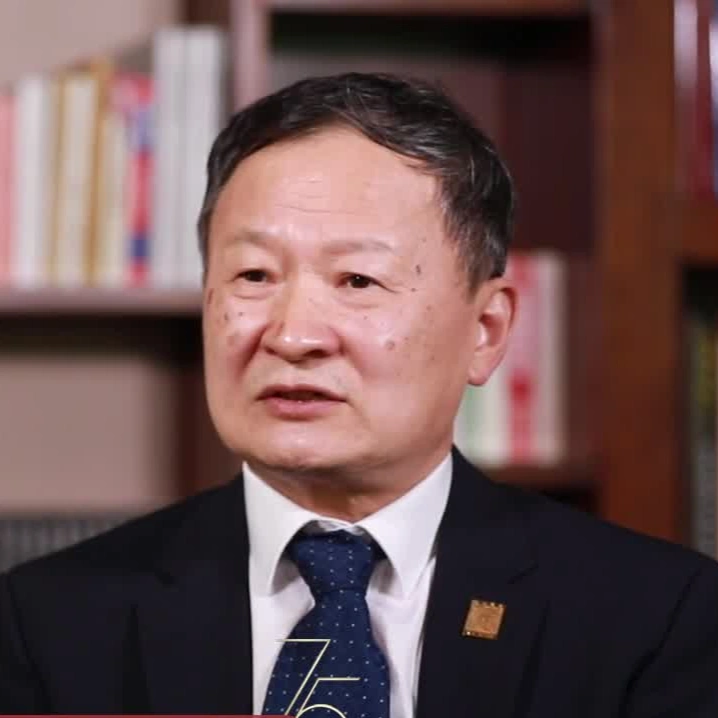U.S. Failed to Steal China’s Space Technology

On October 23, China’s Ministry of State Security released a report titled “Guarding the Bright Starry Sky(《守护璀璨星空——总体国家安全观学习辅导系列述评(十)》),” which revealed attempts by intelligence agencies from “some countries” to lure, entice, and coerce Chinese aerospace researchers with the aim of stealing cutting-edge developments in the field.
Of course, these attempts failed. According to the report, the theft of secrets was particularly linked to remote sensing satellites. Coincidentally, just a month prior, the United States had admitted its defeat to China in the ‘Olympic of satellite technology.’
This situation highlights two points: first, it suggests that the United States acknowledges its own shortcomings in space technology; second, a statement from a senior U.S. intelligence official indicates that the U.S. remains unaware of the true reasons behind its setbacks in the space race against China.
On October 1, China was crowned the dual champion in the 2024 Commercial Remote Sensing Global Rankings, leading both the overall medal and gold medal tallies, while the United States finished in second place.
 Source: https://csis-website-prod.s3.amazonaws.com/s3fs-public/2024-09/241001_Bingen_Gold_Rush.pdf?VersionId=FtAy0I3xBa6EHM.DQJFHxJtZo3W0U1IE
Source: https://csis-website-prod.s3.amazonaws.com/s3fs-public/2024-09/241001_Bingen_Gold_Rush.pdf?VersionId=FtAy0I3xBa6EHM.DQJFHxJtZo3W0U1IE
The judges for the competition were exclusively from the United States, organized by analysts from the Center for Strategic and International Studies (CSIS), the Taylor Geospatial Institute, the Taylor Geospatial Engine, and the United States Geospatial Intelligence Foundation (USGIF). The event featured 11 subcategories.
China’s winning projects included Earth Observation Imaging, Earth Observation Revisit Period, C-Band Synthetic Aperture Radar, Long-Wave Infrared Imaging, and Multispectral Imaging. All five projects, in which China excelled, all possess significant military intelligence value.
Earth Observation Imaging is perhaps the most recognized type of remote sensing, often understood as capturing photographs of the Earth from space. This process employs high-resolution cameras to observe surface features, akin to the experience users have with Google Earth. Utilizing optical sensors, satellites can directly monitor the locations of airports, ports, and military installations, representing a traditional and straightforward form of satellite military intelligence. China’s success in this project signifies that its satellites are capable of producing the clearest images of the planet.
The Satellite Revisit Period refers to the frequency and time interval at which a satellite can revisit and observe the same area. In simple terms, it measures how often a satellite observation network can scan the same location within a given timeframe. This capability holds immense value for military command, as a higher revisit frequency means more up-to-date information on enemy troop positions. This enables the Chinese military to respond more swiftly to enemy movements, whether advancing or retreating, and even to use missiles or long-range rocket artillery to target troop assembly areas before engagement. China’s triumph in this category demonstrates that its satellite network can monitor the Earth’s surface with the highest frequency.
In satellite observation, relying solely on optical sensors limits the ability to capture images on cloudy or rainy days. However, China’s winning technology in C-Band Synthetic Aperture Radar (SAR) effectively addresses this limitation. C-Band SAR transmits microwave signals within the C-band frequency range and receives reflected waves to generate high-resolution images. This radar technology can penetrate cloud cover, ensuring that surface images are still captured even in adverse weather conditions. China’s success in this area demonstrates that its satellites can produce the most precise microwave images, even during rainy weather.


Long-Wave Infrared Imaging, which can be described as thermal imaging technology, is particularly useful for nighttime reconnaissance. According to the U.S. Space Command, the Space-Based Infrared System also provides missile warning information to intelligence agencies. China has now achieved world champion status in this technology.
The final project in which China excelled is Multispectral Imaging, which allows a single sensor to capture data across multiple wavelength ranges simultaneously. This technology is invaluable for assessing vegetation, soil, and hydrological conditions in an area. Such information is crucial for commanders during landing operations and jungle warfare.
Following the official announcement of the competition results and the release of a detailed assessment report by the CSIS, former U.S. Deputy Director of National Intelligence Sue Gordon emphasized that “it is far from enough to expect market forces to drive progress” in the aerospace industry. She believes the U.S. intelligence community should take cues from NASA and develop essential technologies through official funding.
U.S. officials view the key to China’s success in aerospace as its ability to achieve technological breakthroughs through government investment. However, the frequent recognition of a Chinese satellite company at the awards suggests that this conclusion may be too narrow-minded.
Of the 14 medals awarded to China, over one-third were earned by the “Jilin-1(吉林一号)” series developed by Chang Guang Satellite Technology. Established on December 1, 2014, Chang Guang Satellite is China’s first commercial remote sensing satellite company, jointly funded by the Jilin provincial government, the Changchun Institute of Optics, Fine Mechanics and Physics of the Chinese Academy of Sciences, and private capital.

From the perspective of funding sources, while there is indeed government investment. However, what Sue Gordon failed to recognized is that the “Jilin-1” series satellites were not developed for military intelligence purposes at the first place. This network, which comprises 130 satellites, was originally designed to support domestic farmers and businesses.
For example, the award-winning Jilin-1 Video model is one of the first eight satellites launched in 2015 to form this network. It was developed to prevent fires in farmland and forests. In everyday use, these satellites also assist fishermen in avoiding typhoons and monitoring construction progress. The Saparmurat Turkmenbashi Olympic Stadium in Turkmenistan benefited from the services of Jilin-1 Video during its construction.
Another award-winning model, Jilin-1 GP-01/02, known in Chinese as “Forest and Grass 1(吉林林草一号),” is used to monitor humidity, pest levels, and desertification in forests and farmland. This diversity of functions explains why the Jilin-1 series satellites are equipped with numerous sensors, as these applications require comprehensive analysis across multiple types of remote sensing data.

Therefore, the limitations of Sue Gordon’s conclusion are becoming increasingly clear. The full name of this competition is the “Commercial Remote Sensing Global Rankings,” and in the commercial sector, consumer feedback is essential for improving products and advancing technologies. If companies are unaware of consumer dissatisfaction, how can they make meaningful improvements? This dynamic is why, in the last century, Western countries consistently led in industrial software and machine tool technology—because these companies could gather feedback from manufacturers worldwide, while Chinese manufacturers tended to adopt these more mature industrial systems, fostering a positive cycle.
The same reasoning applies to how China can surpass the U.S. in the satellite field.
If U.S. satellite technology were to operate as Sue Gordon envisions—primarily serving the U.S. military and intelligence agencies—then it would be limited to feedback from approximately 3 million American soldiers. In contrast, China’s Jilin-1 satellites can gather insights from 750 million farmers and 170 million businesses.
Moreover, even with a more aggressive military stance, the U.S. cannot engage in warfare every day; however, Chinese farmers and businesses are actively involved in agriculture and commerce on a daily basis. While American soldiers might exaggerate their achievements by claiming credit for targets destroyed by satellite-guided bombs, which farmer would fabricate stories about their fields being burned to promote a satellite company?
Thus, it can be argued that the technological edge of Chinese satellites is a byproduct of serving the people. Unfortunately, this insight seems lacking in the statements of U.S. officials.
In response, Chinese strategist Professor Wang Xiangshui emphasizes that utilizing aerospace technology for the benefit of humanity represents a greater and more competitive goal than merely attacking other countries. Just as the Olympic motto promotes “Faster, Higher, Stronger – Together” the competition in satellite technology should aspire to foster peaceful development for all of humanity.
https://csis-website-prod.s3.amazonaws.com/s3fs-public/2024-09/241001_Bingen_Gold_Rush.pdf?VersionId=FtAy0I3xBa6EHM.DQJFHxJtZo3W0U1IE
https://mp.weixin.qq.com/s?__biz=Mzk0OTUyOTc1Ng%3D%3D&mid=2247494380&idx=1&sn=b900bfb4fcbb8290d9cffa5914705ab3&scene=45#wechat_redirect
https://payloadspace.com/us-second-to-china-in-commercial-remote-sensing-ranking/#:~:text=China%20has%20bested%20the%20US,five%20awarded%20to%20Chinese%20firms.
https://www.spoc.spaceforce.mil/About-Us/Fact-Sheets/Display/Article/2381702#:~:text=The%20infrared%20payload%20consists%20of,to%20theater%20and%20intelligence%20missions.
https://orbitaltoday.com/2024/10/18/2024-commercial-remote-sensing-global-rankings-revealed/#:~:text=2024's%20trends%20for%20commercial%20remote%20sensing%20global%20rankings&text=The%20report%20has%20a%20(deliberate,securing%20a%20gold%20medal%20each.
https://www.gov.cn/xinwen/2023-02/14/content_5741497.htm
https://dara.gd.gov.cn/nyyw/content/post_1468477.html#:~:text=%E4%BB%96%E5%9C%A8%E5%9B%BD%E5%8A%A1%E9%99%A2%E6%96%B0%E9%97%BB%E5%8A%9E%E5%85%AC%E5%AE%A4,%E4%B8%8A%E5%B7%B2%E7%BB%8F%E4%B8%8D%E5%9C%A8%E5%86%9C%E6%9D%91%E4%BA%86%E3%80%82




-300x169.jpg)
britishiptv
I just could not depart your web site prior to suggesting that I really loved the usual info an individual supply in your visitors Is gonna be back regularly to check up on new posts